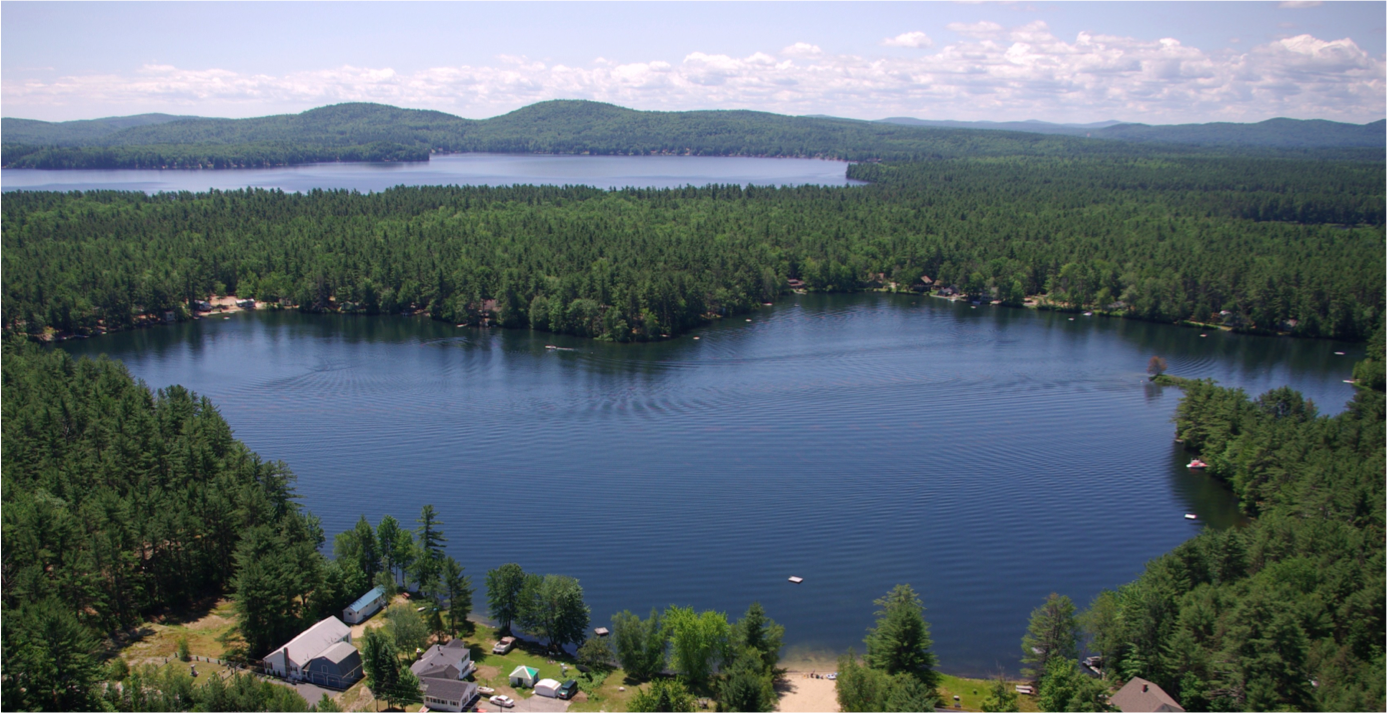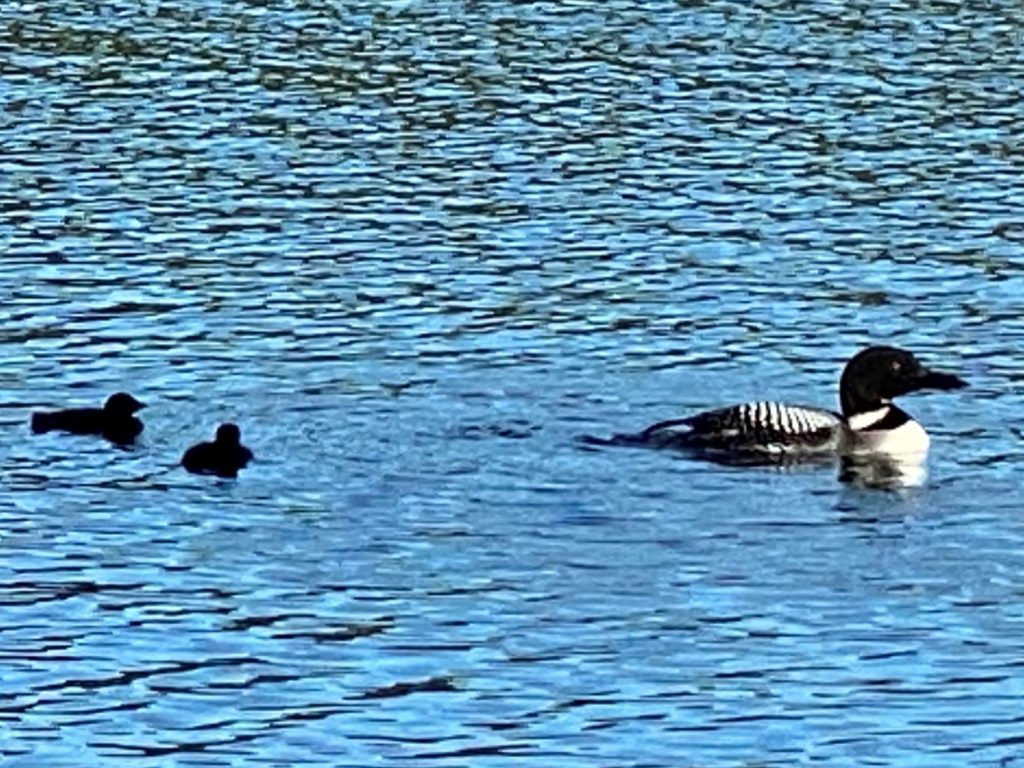
Lake Ivanhoe – aka Round Pond ✦ Wakefield New Hampshire USA ✦ Lat, Long = 43.60128,-70.99032
Notables
Happenings
Did you know?
Lake Ivanhoe (also known as Round Pond) is located in Carroll County, New Hampshire. The lake has no traditional inlets or outlets. Historically, a small stream drained Lake Ivanhoe to Great East Lake, but construction filled in that stream many years ago and now drainage flows via groundwater to Great East Lake. The Lake Ivanhoe watershed is 455 acres (184 ha) and is 64% forested. The watershed is currently 17%, developed with 59% of the watershed being buildable area. The Lake Ivanhoe shoreline is primarily composed of low density residential houses and camps (66%). The majority of these structures (88%) are within 50 feet of the water’s edge.
 Lake Ivanhoe is classified as mesotrophic. Lakes are classified based on the amount of available nutrients (Phosphorus and Nitrogen) for organisms. More fertile lakes have more nutrients and therefore more plants and algae. Mesotrophic means a moderate level of nutrients and biological activity. These lakes have clear water, rocky and sandy bottoms, very little algae, and submerged aquatic plants. Mesotrophic lakes are great fishing lakes and are home to many sport fish. Lake Ivanhoe is home to Panfish, Largemouth Bass and Northern Pike.
Lake Ivanhoe is classified as mesotrophic. Lakes are classified based on the amount of available nutrients (Phosphorus and Nitrogen) for organisms. More fertile lakes have more nutrients and therefore more plants and algae. Mesotrophic means a moderate level of nutrients and biological activity. These lakes have clear water, rocky and sandy bottoms, very little algae, and submerged aquatic plants. Mesotrophic lakes are great fishing lakes and are home to many sport fish. Lake Ivanhoe is home to Panfish, Largemouth Bass and Northern Pike.
Quick Facts
| Towns/States/Co. Total Watershed Area Lake Area Shore Length Max Depth Mean Depth Lake Volume Flushing Rate Lake Elevation Trophic Classification Impairments |
Wakefield, NH (Carroll Co.) 0.71 square miles 68 acres 1.7 miles 20 ft 12 ft 992,000 cubic meters 0.9 times per year 596 ft Mesotrophic Moderate(Phosphorous) |
| Invasives: Lake Ivanhoe is not impacted by invasive flora or fauna such as variable milfoil. Our goal is to keep it that way. We participate in the UNH Lay Lakes Water Monitoring Program and proactively inspect boats for invasive fauna and flora before they are put in the water. | |

We have a loon family at the lake. Mom, Dad and two chicks. Did you know that there are only a few hundred loon families in the entire state of New Hampshire?

Lake vs. Pond – So which is it?
The general distinction between pools/ponds and lakes is vague. A generally accepted definition is that ponds and pools have their entire bottom surfaces exposed to light, while lakes do not. In addition, some lakes become seasonally stratified. Ponds and pools have two regions: the pelagic open water zone, and the benthic zone which comprises the bottom and shore regions. Since lakes have deep bottom regions not exposed to light, these systems have an additional zone, the profundal. These three areas can have very different abiotic – (nonliving – physical and chemical interactions) conditions and, hence, host species that are specifically adapted to live there. So if you take our average Secchi disk measurements of 16.5 feet and the maximum depth of the lake at 20 feet you could argue that we have portions of the lake that do not receive sunlight exposure.
